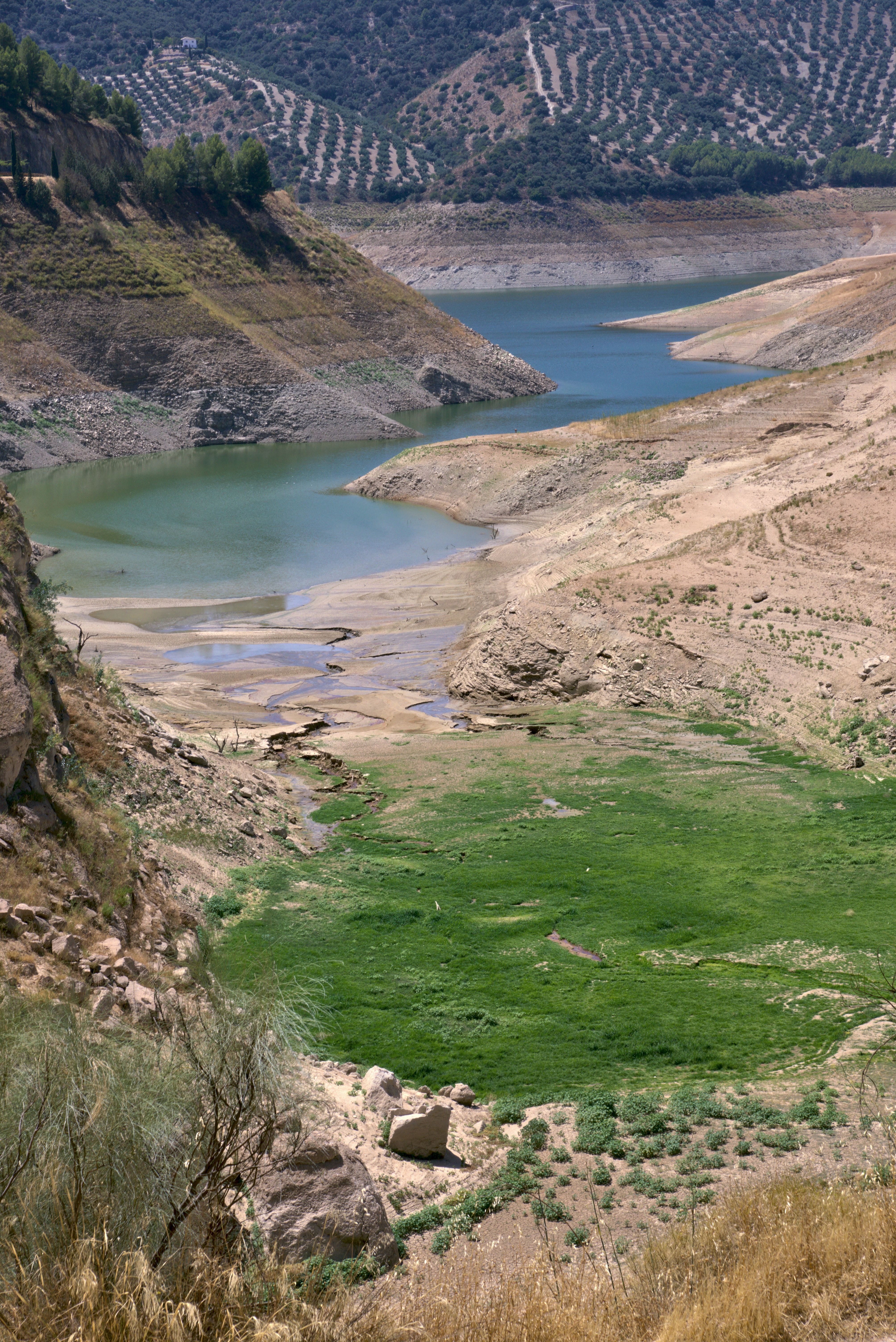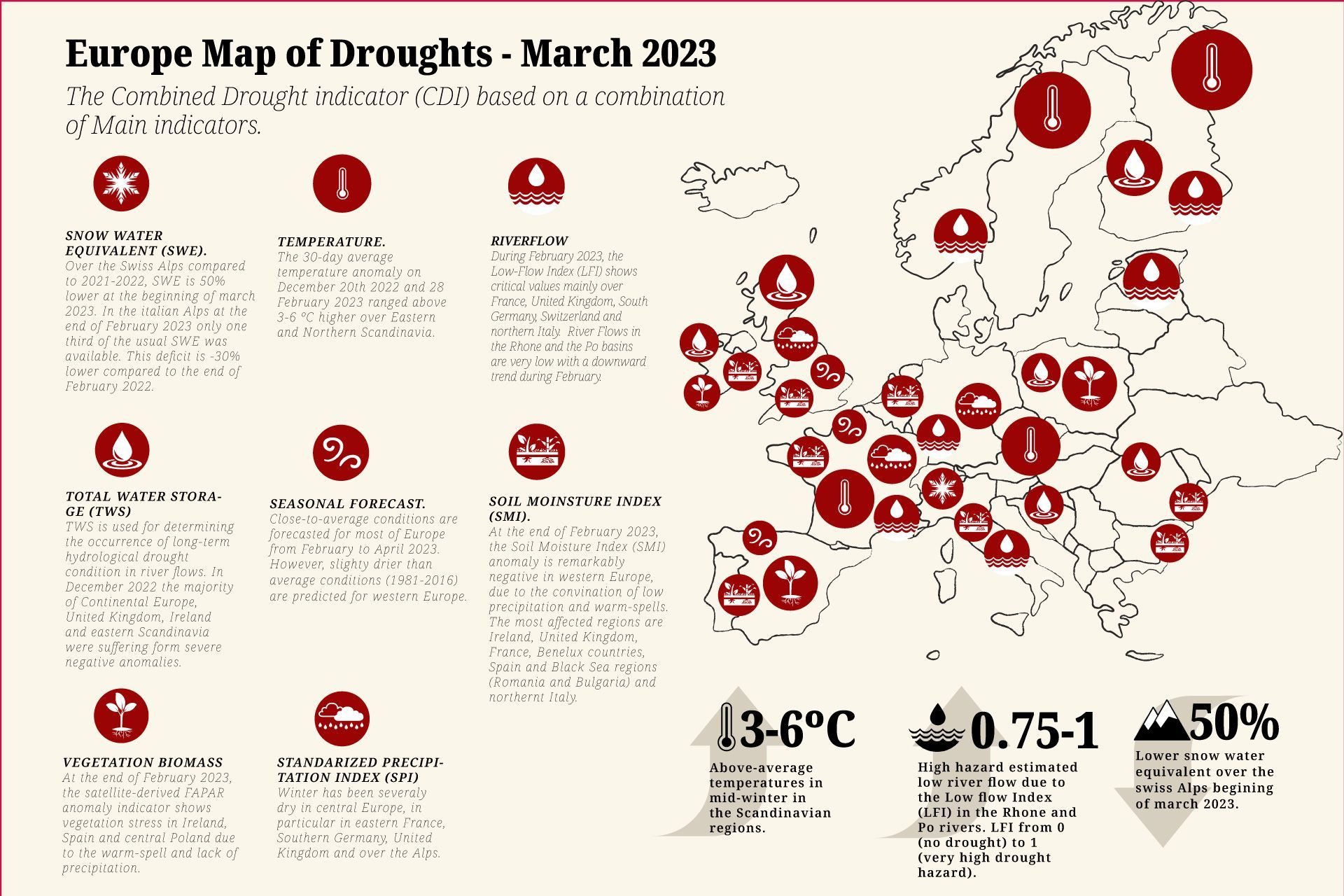The Technical Report published by the Joint Research Center (JRC), the European Commission's science and knowledge service, provides evidence-based scientific support showing the impacts of the emerging drought that has been visible in Europe during the winter and spring months. Based on the observation of Combined Drought Indicators (CDI). These indicators combine meteorological, hydrological and biophysical variables captured by satellites as well as the temporal and spatial scales of the indicator and the geographical area where they occur, attempting to explain the drought conditions associated with impacts on available water sources.

The CDI's provide an effective comparison to assess how the evolution of drought occurs over a given period of several years. The Global Drought Observatory in Europe published in March 2023, compares how the end of the winter season has been this year and the two previous years. The comparative shows that in the late winter months in 2021 the CDI's maintained normal conditions. However, in 2022 the indicators showed 'warming conditions' mainly in the southern regions of Europe. In contrast, in 2023, the indicators show that drought is affecting Central and Western parts of Europe. The three countries that have triggered the most warnings about the strongest impacts of drought on their water resources, agriculture and energy production are Italy, France and Spain. Significant evidence of drought has also been seen at the end of the winter season and in many cases has continued to trend through the spring months in Ireland, the UK, Switzerland, most of the Mediterranean islands, Black Sea regions such as Bulgaria, Romania and Greece.

The Standardized Precipitation Index (SPI) shows the anomalies produced by the lack of precipitation compared to the usual average. In this case the SPI analyses the cumulative records over a 12-month period. The conclusion is that many parts of Europe have been accumulating negative or visibly below-average precipitation records over the last year. The year 2023 has started with anomalies in most of France, Germany, northern Italy, northern Poland and the Black Sea coast. The Temperature indicator shows the prolonged above-average temperatures occurring during the different seasons, compared to pre-industrial parameters. Between the period of late 2022 and early 2023, many regions of Europe have experienced high mid-winter temperatures, with Central Europe and eastern Scandinavia experiencing temperatures 3 to 6 °C above average. The UK, on the other hand, has experienced one of the warmest and driest winters in its history.
The most effective way to quantify the assessment of snow water resources is through the Snow Water Equivalent (SWE). It represents the amount of water stored at the top of the mountains. Comparing 2022-2023 with respect to the previous decade of 2011-2021, there have been periods during the winter season where only one third of the usual SWE was available. The Soil Moisture Index (SMI) together with the Total Water Storage (TWS) is used to determine long-term hydrological drought conditions. It also often serves as a proxy for the amount of groundwater available. Low precipitation records and above average warm temperatures show low soil moisture indicators especially in Western Europe in countries such as Spain, France, the UK, Italy, among others. Satellite records of vegetation stress in Europe are studying the loss and availability of Vegetation Biomass. Southern Spain is particularly vulnerable and may be at increased risk of drought and vegetation loss during the summer months, after having experienced an extremely hot April, reaching temperatures of 38°C.

The evolution of river flow is another important indicator of the progress of the drought. As rivers are one of the most important water sources, it is determined by the River Flow Index (SLI). There are some areas in Europe, such as the Rhone and Po basins, where critical river flow values are expected to be reached by 2023. The Global Drought Observatory Analytical Report in early March reflected extremely warm conditions across Europe which have continued to record anomalies in CDI (Lack of precipitation and warmer-than-average temperatures) in central and southern regions during May 2023. Close monitoring is required to understand the impacts expected for the coming growing season.
Bibliography.
Global Drought Observatory Analytical Report. Toreti, A., Bavera, D., Acosta Navarro, J., Arias-Muñoz, C., Avanzi, F., Marinho Ferreira Barbosa, P., De Jager, A., Di Ciollo, C., Ferraris, L., Fioravanti, G., Gabellani, S., Grimaldi, S., Hrast Essenfelder, A., Isabellon, M., Jonas, T., Maetens, W., Magni, D., Masante, D., Mazzeschi, M., Mccormick, N., Meroni, M., Rossi, L., Salamon, P. and Spinoni, J., Drought in Europe March 2023, EUR 31448 EN, Publications Office of the European Union, Luxembourg, 2023, ISBN 978-92-68-01068-6, doi:10.2760/998985, JRC133025.

